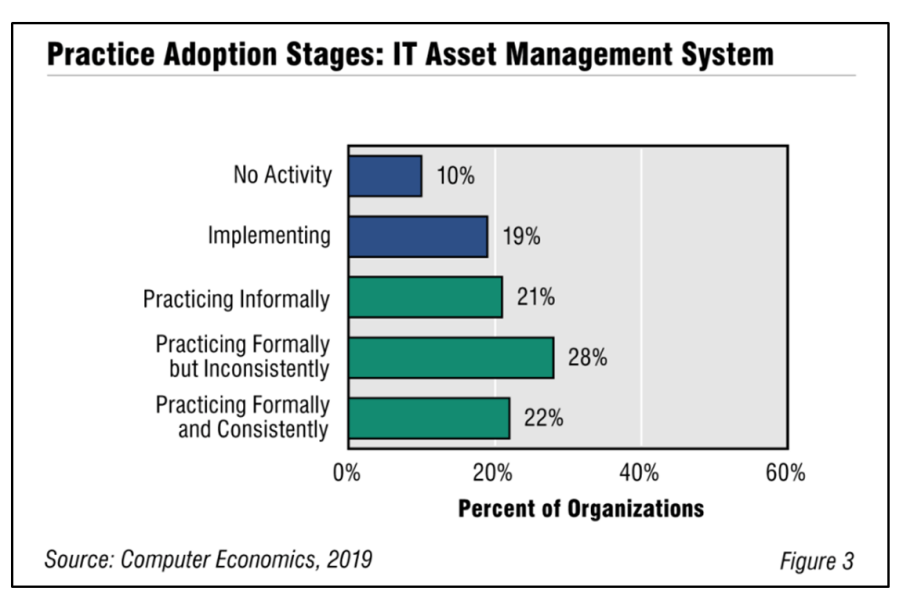For IT organizations, the dream of having all IT assets fully documented and tracked within a formal system remains elusive. While IT organizations have been able to bring certain assets under control, as soon as one area has stabilized, the technology changes. Employee-owned devices and technologies designed to simplify IT asset management such as SaaS keep moving the goal line. And as the Internet of Things (IoT) blurs the definition of an IT asset, asset management systems need to rise to the challenge.
That’s where the best practice of IT asset management (ITAM) comes in. Such systems track all of the information about IT assets, such as hardware and software licenses, along with critical data such as location, configuration, and renewal dates.
Figure 3 from our full report, IT Asset Management Adoption and Best Practices, shows that only a moderate number of organizations are fully on board. About 21% track IT assets informally, 28% track them formally but inconsistently, and 22% are formal and consistent in tracking IT assets. Another 10% report no activity, while 19% are implementing some portion of this best practice for the first time.

In addition to hardware management, ITAM systems monitor software usage and licensing and play a critical role in license compliance and IT service management. The data is used to populate and maintain a configuration management database, which becomes a central data pool for functions such as granting user permissions, allocating resources, deploying standardized servers and desktops, tracking license usage, managing hardware life cycles, speeding incident resolution, and other activities.
“IT asset management has become more challenging lately, but it is also more important than ever,” said Tom Dunlap, director of research for Computer Economics, an IT analyst firm based in Irvine, Calif. “Take smartphones used for business, for instance. IT managers need to know who has them and how they are being used. Many older IT asset management systems were not designed to track these sorts of devices.”
A major challenge of asset management today is that the definition of an asset is evolving. Instead of tracking down all the physical assets and the software running on them, which can be hard enough, virtualization means the number of servers and desktops is continually changing virtually as well as physically. (Some ITAM vendors offer support for virtual machines and virtual hosts in their solutions, though that support is rare.) It is no longer good enough to have asset discovery software crawl the network and take an inventory of what is running where.
In the full report, we describe why IT asset management is an important process and the challenges it faces. We next study IT asset management system adoption and practice levels, examining those by organization size and sector. We conclude with best-practice suggestions for successful asset management and how to make the practice more effective. This best practice is one of 35 that we analyze our annual IT Management Best Practices study.
This Research Byte is based on our report on this subject, IT Asset Management Adoption and Best Practices. The full report is available at no charge for Avasant Research subscribers or it may be purchased by non-subscribers directly from our website (click for pricing).

